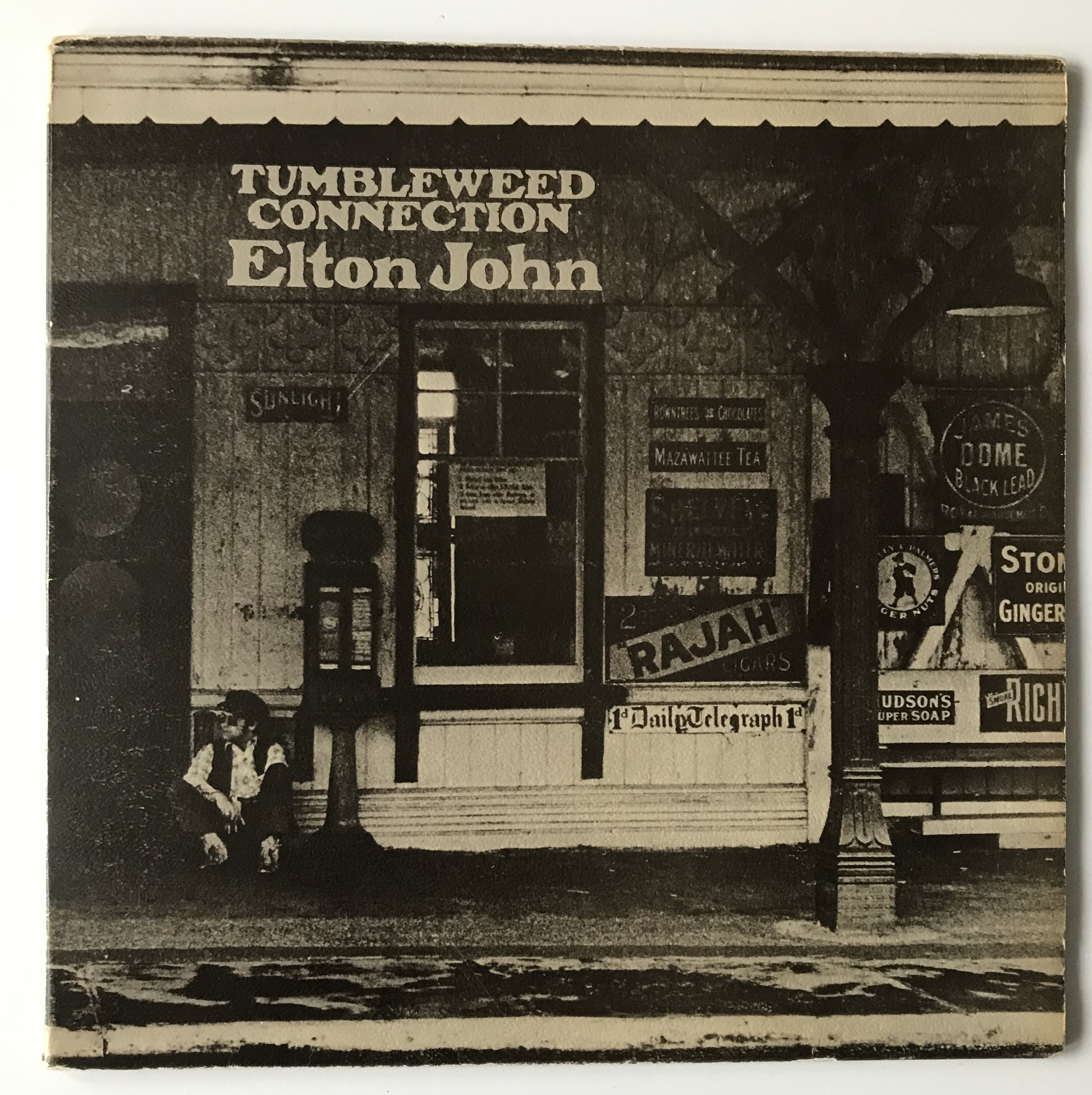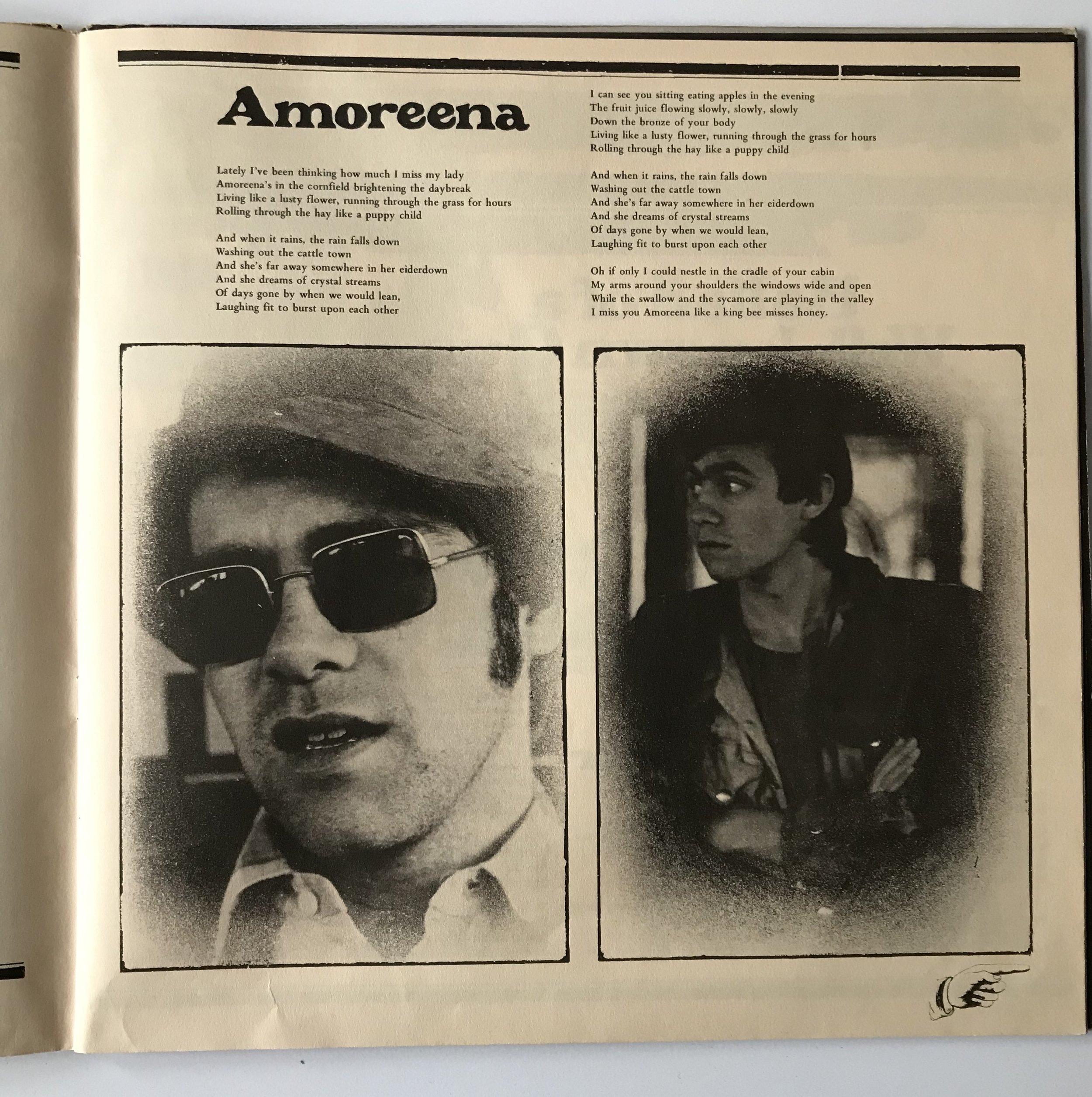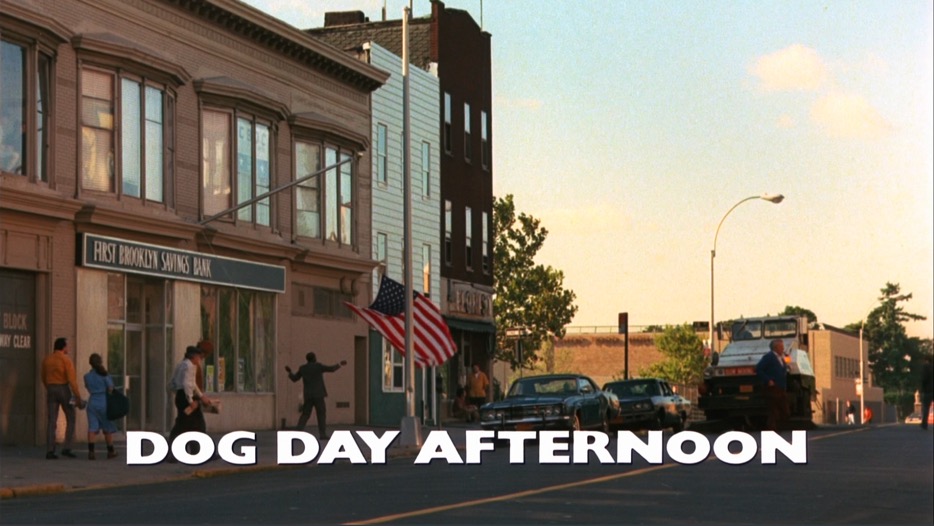Against all convention, Dog Day Afternoon (1975) plays out the course of its drama without a supporting music track. No piano, guitar, french horn, piccolo, jaw harp, nothing at least after the story proper starts at the closing of the working day. For the first 5 minutes of the film over a montage of city scenes, a New York summer, Elton John’s ‘Amoreena’ plays in its entirety. The skip beat of the performance gives a rhythm to the edits of scenes of dogs nosing garbage bags, Bowery bums, Coney Island’s beaches, ferries, car jams, construction workers, tennis courts, commuters, and Manhattan skylines seen behind a roof top swimming pool and a cemetery. There’s a familiarity in the images echoed in numerous other New York set movies of the period, but Elton John’s recording is by any reckoning a strange choice. Neither contemporary, it was released 5 years earlier on Tumbleweed Connection, nor in anyway a pop city symphony. Just about anything by Bruce Springsteen from his first two albums would have made a more thematically appropriate choice.
Tumbleweed Connection was John’s 3rd album and one deeply in thrall to the Americana of The Band. Bernie Taupin’s lyrics evoke images of the antebellum South, Western gunfighters, and mission houses. The sepia sleeve and accompanying booklet provide a panoply of supporting illustrations and photographs, even if the actual English location of the heritage steam train station depicted on the front of the gatefold, with all its enamelled adverts for the most British of goods - Cadburys, Rowntrees, Ogden’s tobacco - seem counter to the album’s particular tale of the New World; from Bushy, Herts, Reg Dwight’s own Atlantic crossing.
‘Amoreena’ is about a lover fussing over his absent muse who he imagines in the cornfield’s brightening daybreak in days gone by. Taupin’s lyric offers up the strange conjunction ‘puppy child’ and the absurd idea of a sycamore tree ‘playing in the valley’ among the most hackneyed of romantic imagery - dreams of crystal streams. Elton John’s performance is strong enough to hide all the bad poetry, but it doesn’t make it anymore of an apposite choice of a song to use as a place setter in the film for the drama that follows. I’ve heard it said the producers were using Elton’s persona to make an off-hand comment on the sexuality of Pacino’s character, but then why this track? It’s many things, but Gay themed or camp it is not. What it also isn’t is funky. Beside the Van Morrison mannerisms that Elton channels, the song is far removed from soul music or from any black contemporary musical idiom. Issac Hayes, Curtis Mayfield, Bobby Womack with Shaft, Superfly and Across 110th Street defined the 1970s city soundtrack, unlike them Elton John is not American and he is not black. Maybe that’s the point of why he was used, a means to signify that Dog Day Afternoon is not a blaxploitation picture. I think that might be the case but, even if I’m right about that, the choice of ‘Amoreena’ itself remains utterly obscure to me. Perhaps Sidney Lumet just liked the tune. For myself, I’d have chosen Springsteen:
‘The cripple on the corner cried
out, “Nickels for your pity”
Them gasoline boys downtown
sure talk gritty
It’s so hard to be a saint in the city.’


